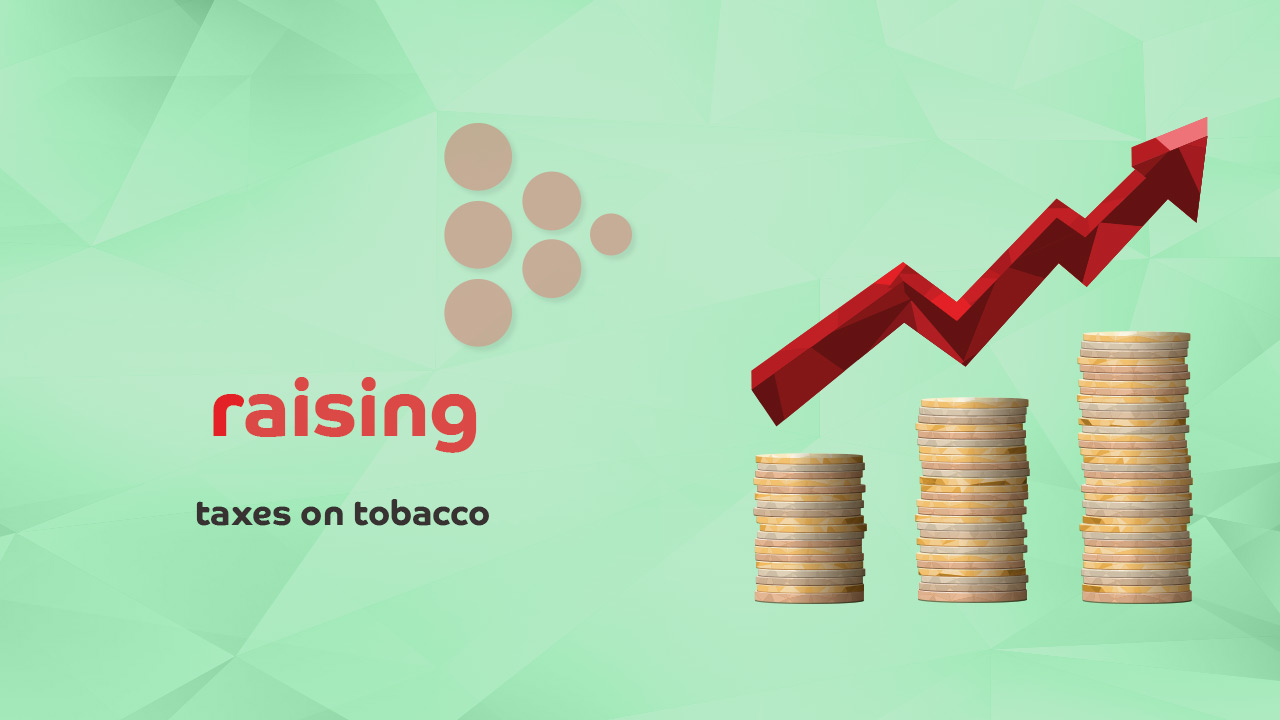
Context
Jordan became the second country in the WHO Eastern Mediterranean Region to ratify the WHO Framework Convention on Tobacco Control (FCTC) on 19 August 2004. However, despite enacting a tobacco control law in 1977, followed by Law No. 47 in 2008 (amended in 2017), the prevalence of tobacco use among youth remained high. The first Global Youth Tobacco Survey conducted in 1999 indicated that 20.6% of youth were current tobacco users. Despite various tobacco control interventions, the prevalence of tobacco use among youth did not decrease in subsequent years. Eight years later, it increased by an additional 10% to reach 30.3%. This highlighted the urgent need for a cost-effective tobacco control measure that specifically targeted youth, as they are particularly responsive to changes in tobacco prices.
Initiative
Starting in 2008, Jordan implemented progressive tobacco taxation as part of the implementation of Article 6 of the WHO FCTC. Initially, the price of a 20-cigarette pack of the most popular brand was US $ 1.2. The tax structure in Jordan consisted of a mixed excise system with both specific and ad valorem components. The specific excise tax was set at 102% of the retail price, excluding taxes, with multiple tiered specific floors.
In 2013, the Ministry of Health requested assistance from WHO after the tobacco industry reduced prices, making tobacco products more affordable. WHO collaborated with the Ministry of Finance to analyze the causes and impacts of these changes on tobacco consumption rates, the tobacco market structure and government revenues. As a result of this collaboration, Jordan increased the specific component of the mixed excise tax structure by 41%. Subsequently, the Income and Sales Tax Department in the Ministry of Finance implemented tax increases in 2014, 2016, 2017 and 2018 based on specific tax regulations. These tax increases led to higher retail prices for tobacco products. The price of the same pack rose to US $ 1.34 in 2010, US $ 1.55 in 2012, US $ 1.69 in 2014, US $ 1.83 in 2016 and US $ 2.82 in 2018. According to the WHO Report on the Global Tobacco Epidemic of 2019, total taxes on the most sold brand of cigarettes now account for 80.5% of the retail price, with the specific excise tax contributing 66.8%. In 2019, an additional tax was imposed on heated tobacco products and electronic cigarettes.
Challenges and lessons learnt
Among the countries in the WHO Eastern Mediterranean Region, Jordan is one of the three countries that has achieved the highest level of implementation in tobacco tax increases. Currently, a special tax equation based on price and value-added taxes is used. However, implementing taxation in line with WHO's recommended system is challenging in Jordan due to the existence of over 32 price segments for tobacco products. While the tax policies implemented yield satisfactory tax returns for the tax department, a significant drawback of this system is that it relies on price lists provided by tobacco companies, allowing them to potentially lower prices without any restriction. In 2013, such manipulation by the tobacco industry occurred, as they reduced prices and the tax department was unable to intervene. Although the government promised not to impose any taxes in 2020, it remains committed to its successful approach of continuously increasing the tobacco tax rate.
Impact
Although there has not been a direct measurement of the impact of tax increases, findings from the latest Global Youth Tobacco Survey conducted in Jordan in 2014 indicate a decrease in the overall use of tobacco products by 6.3%, from 30.3% in 2009 to 24.0% in 2014. This decline was particularly notable among females, with a decrease from 19.4% in 2009 to 13.8% in 2014. This suggests that females are more responsive to price increases in tobacco products. However, to fully evaluate the impact of the progressive tax increases on tobacco use trends in Jordan, more specific national and recent indicators are required.
In 2016, the government generated tax revenues of US $ 779.8 million from total excise taxes and US $ 168.5 million from value-added taxes and other sales taxes solely from cigarettes. Despite a decrease in the affordability of cigarettes from 2008 to 2018, as stated in the WHO Report on the Global Tobacco Epidemic of 2019, tobacco products still remain relatively affordable for young adults, leading to increased tobacco consumption. Therefore, continuous increases in taxes on tobacco products and retail prices are necessary to reduce tobacco consumption among youth and discourage initiation.
Next steps
Efforts are being made to further increase taxes and prices in the future. Additionally, the development of a tax tracking system is underway.
References
Global Tobacco Surveillance System
MPOWER measures to reduce demand for tobacco
WHO Framework Convention on Tobacco Control
WHO Report on the Global Epidemic Tobacco 2019
Story originated in 2019.


